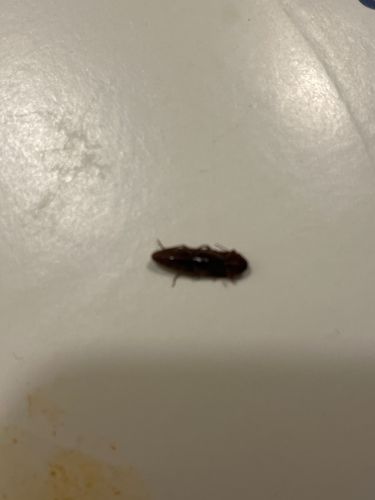German Cockroach
Scientific Name: Blattella germanica
Order & Family: Blattodea, Ectobiidae
Size: Typically 1.1 to 1.6 cm (0.43 to 0.63 inches) long.

Natural Habitat
Prefers warm, humid environments close to food and water sources, commonly found in kitchens and bathrooms of homes, restaurants, and other commercial buildings. They often hide in dark, undisturbed areas like cracks, crevices, behind appliances, and inside cabinets.
Diet & Feeding
Omnivorous scavengers, eating almost anything organic, including food scraps, grease, pet food, soap, toothpaste, glue, and even other cockroaches when food is scarce.
Behavior Patterns
Nocturnal, hiding in cracks and crevices during the day. They are fast runners and can be difficult to catch. They are known for rapid reproduction rates, with females producing multiple egg cases (oothecae) containing many eggs.
Risks & Benefits
Potential risks include spreading pathogens (bacteria, viruses, fungi, parasites) that can cause food poisoning, dysentery, and other diseases. They can trigger allergies and asthma in sensitive individuals due to allergens in their feces, saliva, and shed exoskeletons. They are primarily a nuisance and a sign of unsanitary conditions. There are no known significant benefits to humans or ecosystems from German cockroaches.
Identified on: 8/28/2025